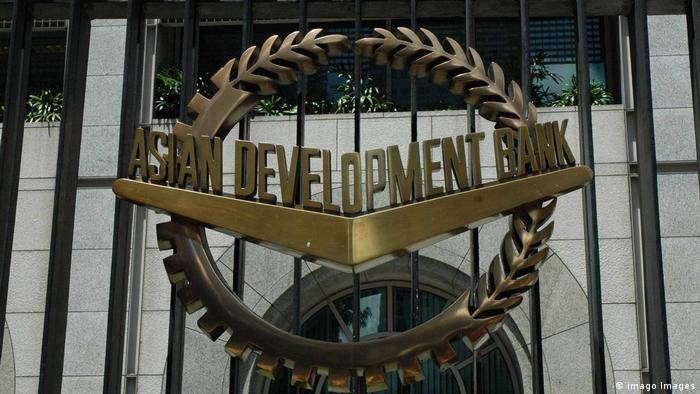Lrn&Shr
Latest News / Articles
The World Bank Group works with public- and private-sector clients to close gaps between males and females globally in tackling poverty and driving sustainable economic growth in our client countries. In the last two decades, the world has narrowed the divide between men and women, especially in primary education and health. Yet critical gaps remain. (Source: www.worldbank.org)

The ADB has launched the Women Finance Exchange- it's aimed at helping expand access to financing for women
For an exclusively digital bank, TymeBank has an unusually personal approach for finding new customers.
The South African lender was launched in 2015 and does not have physical branches. However, it does operate a national network of kiosks in grocery stores and supermarkets. The aim is to find people who may want to open a bank account, but who feel hindered in some way from doing so.
In South Africa, that group invariably comprises a lot of women. According to Rachel Freeman, in charge of growth and development at Tyme, there are three main barriers impeding women with low incomes from getting involved in banking and lending: physical location, financial cost and emotional questions.
According to Freeman, many women in developing economies find it "scary and challenging" to get involved with a bank, particularly if it includes walking into a branch. "We believe very strongly that people only can walk from where they stand. So we try to meet them where they are," she mentions, explaining the logic behind the supermarket kiosk idea.
Freeman mentioned at the launch of the Asian Development Bank's (ADB) "Women Finance Exchange," an initiative aimed at helping significantly expand access to financing for women and women-led businesses around the world.
"What they're doing is providing an online portal, that creates a community where knowledge can be shared," according to Christine Engstrom, from the ADB's private sector financial institutions division."
Gender-based barriers to banking and other forms of financing are a major global problem. The ADB estimates that up to 1 billion women around the world are inadequately served financially.
That translates into a huge sum of money. A 2017 World Bank report estimated that the gender finance gap for micro, small- and medium-sized businesses stood at around $1.7 trillion (€1,45 trillion) globally. Considering that several analyses have found that the COVID-19 pandemic has exacerbated gender inequality around the world, that gap is unlikely to have been bridged much in recent times.
"Many financial institutions in ADB's developing member countries have not targeted women borrowers as yet," according to Ashok Lavasa, the ADB's vice president.
"They have not yet realized the untapped commercial potential of banking with women, and could also be unaware of the barriers that women encounter when trying to access financial services."
Tyme has targeted breaking down those barriers and it appears to be succeeding. Earlier this year, the bank added its three millionth customer and says it is adding up to 5,000 new ones per day, with around 85% of those signing up via the supermarket kiosks.
As per the bank statement, the kiosks give people the opportunity to open a bank account in three minutes or less, with the help of an "ambassador," 70% of whom are women. Being easily located where women buy groceries targets the physical barrier, according to Freeman, because it removes the need to go to a branch.
However, according to Freeman -arguably the greatest barrier for women getting more involved in banking and lending is the emotional one.
"When you go to a branch to open an account, there are lots of forms to fill out but there is not that much education. There is no one who says 'this is how it works.' We try to overcome this emotional barrier by doing on-the-spot, hands-on education.
"If you want to reach the low-income and rural population, you have to embrace a model that goes beyond the digitally savvy."
This kind of flexibility is important if financial institutions are to succeed in helping more women, and more female-led businesses - according to Sucharita Mukherjee CEO of Kaleidofin, an Indian digital financial services platform.
Her company provides financial guidance to individuals, households and businesses via a smartphone app. However, according to her, for many women, they were reliant on using their husband's smartphone.
According to her, "They wanted to make sure that their savings were confidential". "They might therefore use a friend's smartphone. So we had to make sure we could support that level of confidentiality in our systems."
However, she is of the opinion that female customers often ended up being the most committed and disciplined. "We saw women as the gateway to the family, being the custodian of the household's financial goals."
According to Lavasa, more and more attention is being paid to the issue of the gender financing gap by both banks and nonfinancial institutions. He also points out that various studies have shown that supporting the so-called female economy can be profitable for lenders.
He cited a 2019 survey by the International Finance Corporation which found the average nonperforming loan ratio for women-owned SMEs was 3.7%, significantly lower than the overall average of 5%.
That was a statistic that chimed with his own personal experience of working with rural financing in India in the 1980s, when he said women were routinely more disciplined borrowers than men.
"What is good for gender equality, is good for the economy and good for the society as well," according to him. "But there is a long way to go."
Share This:
Copyright © 2019 Cognitive Lrn&Shr . all rights reserved.